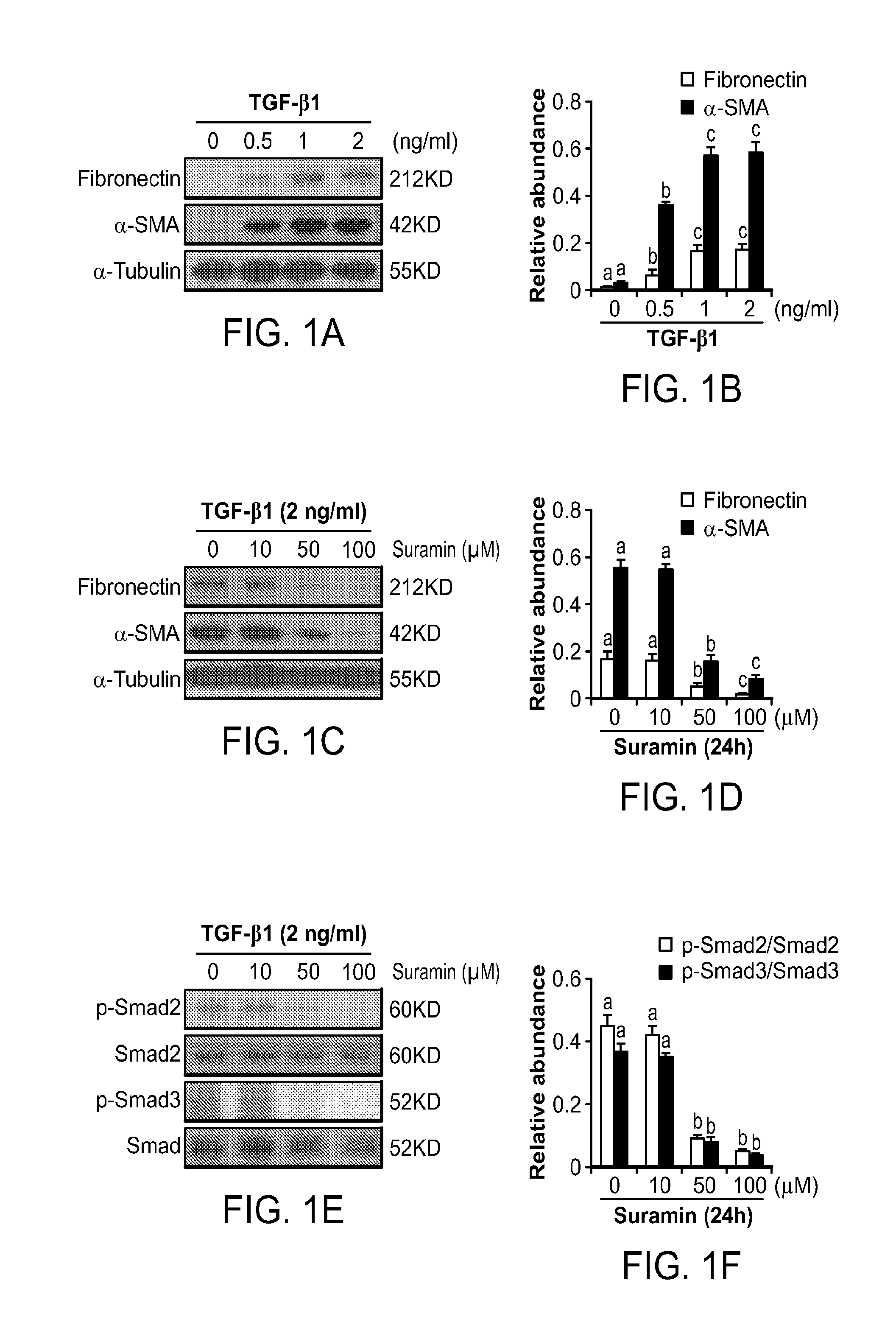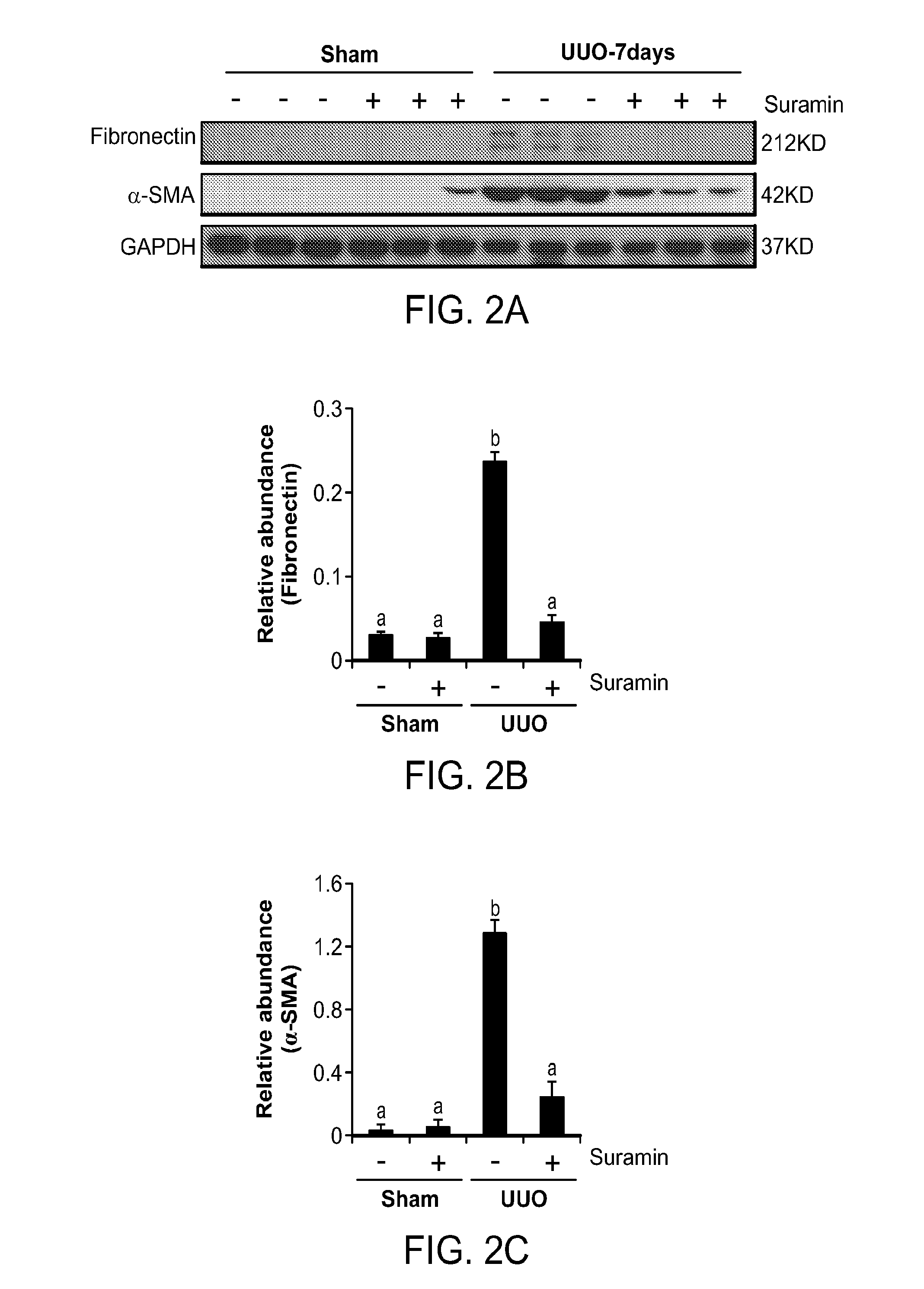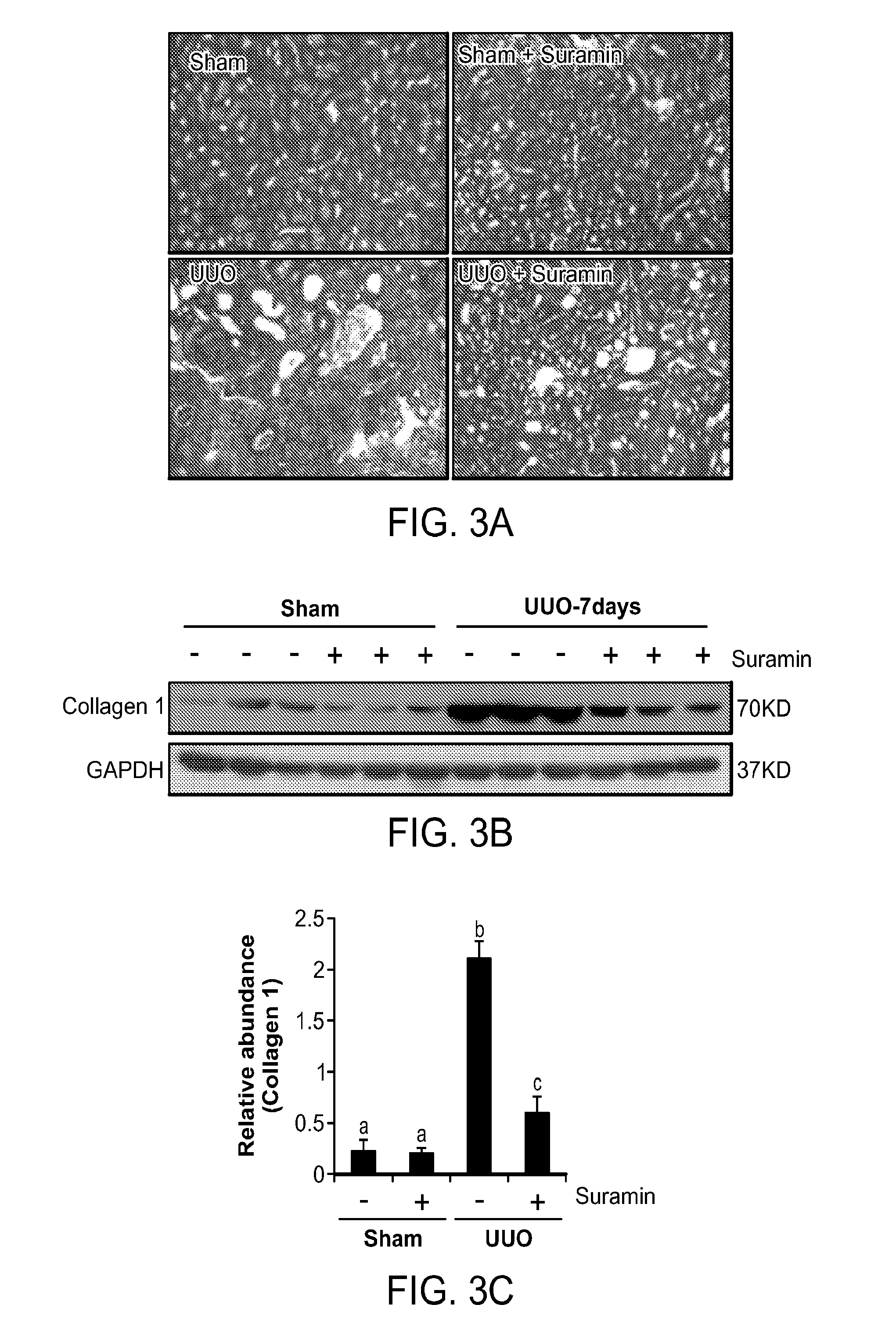Inhibition of Renal Fibrosis
a technology of renal fibrosis and inhibition of fibrosis, which is applied in the field of kidney disease, can solve the problems of tissue scarring and fibrotic lesions, and achieve the effects of inhibiting the progression of renal fibrosis, and preventing the development of renal fibrosis
- Summary
- Abstract
- Description
- Claims
- Application Information
AI Technical Summary
Benefits of technology
Problems solved by technology
Method used
Image
Examples
example 1
Suramin Inhibits Renal Fibrosis in Chronic Experimental Kidney Disease
[0146]CKD is the result of various insults to the kidney, affecting approximately 10% of the normal population. Unchecked progression of CKD invariably leads to ESRD and the requirement for renal replacement therapy (dialysis or transplantation). Given the high prevalence of CKD and cost of replacement therapies for ESRD, any treatment that halts or slows the progression of renal fibrosis has the potential to provide an immense medical, social and economical benefit. However prior to the invention, no effective treatments to block renal fibrosis progression had been identified.
[0147]The therapeutic application of suramin in obstructive nephropathy was also assessed in this study. The study demonstrated that treatment of cultured renal interstitial fibroblasts with suramin inhibited serum- and transforming growth factor-β1 (TGF-β1)-induced activation of renal interstitial fibroblasts as evidenced by a dose and time...
example 2
Delayed Administration of Suramin Attenuates the Progression of Renal Fibrosis in Obstructive Nephropathy
[0183]In Example 1, suramin treatment was shown to prevent the onset of renal fibrosis in a model of obstructive nephropathy induced by unilateral ureteral obstruction (UUO). In this study, we further assessed the effect of delayed administration of suramin on the progression of tubulointerstial fibrosis. Mice were given a single dose of suramin at 20 mg / kg starting at day 3 of obstruction and kidneys were harvested after an additional 7 or 14 days of obstruction. Suramin completely blocked further increase in expression of type 1 collagen and fibronectin and largely suppressed expression of α-smooth muscle actin (α-SMA) in both treatment groups. UUO injury induces phosphorylation of Smad-3, a key mediator of transforming growth factor-β (TGF-β) signaling, epidermal growth factor receptor, and platelet derived growth factor receptor after 3 days and further increased at 10 days a...
example 3
S3I-201, a Novel STAT3 Inhibitor, Inhibits Renal Interstitial Fibroblast Activation and Attenuates Renal Interstitial Fibrosis in Obstructive Nephropathy
[0198]Chronic kidney disease is characterized by accumulation of interstitial myofibroblasts and production of excessive amounts of extracellular matrix proteins. In this study, we examined the effect of S3I-201, a novel inhibitor of STAT3, on the activation of renal interstitial fibroblasts and the progression of renal fibrosis. In cultured rat renal interstitial fibroblasts, S3I-201 treatment inhibited the activation of renal interstitial fibroblasts as evidenced by dose- and time-dependent blocking of α-smooth muscle actin and fibronectin expression. In a mouse model of renal interstitial fibrosis induced by unilateral ureteral obstruction, STAT3 was activated, and administration of S3I-201 inhibited STAT3 activation and attenuated extracellular matrix protein deposition after obstructive injury. S3I-201 was effective in reducing...
PUM
| Property | Measurement | Unit |
|---|---|---|
| concentrations | aaaaa | aaaaa |
| half life | aaaaa | aaaaa |
| time | aaaaa | aaaaa |
Abstract
Description
Claims
Application Information
 Login to View More
Login to View More - R&D
- Intellectual Property
- Life Sciences
- Materials
- Tech Scout
- Unparalleled Data Quality
- Higher Quality Content
- 60% Fewer Hallucinations
Browse by: Latest US Patents, China's latest patents, Technical Efficacy Thesaurus, Application Domain, Technology Topic, Popular Technical Reports.
© 2025 PatSnap. All rights reserved.Legal|Privacy policy|Modern Slavery Act Transparency Statement|Sitemap|About US| Contact US: help@patsnap.com



